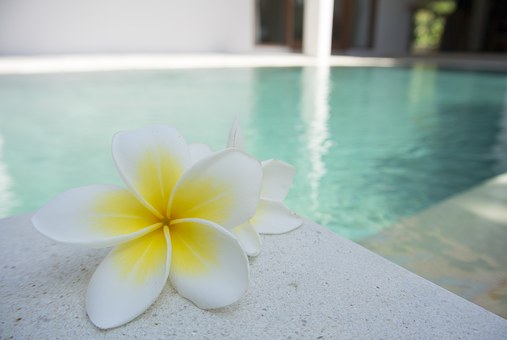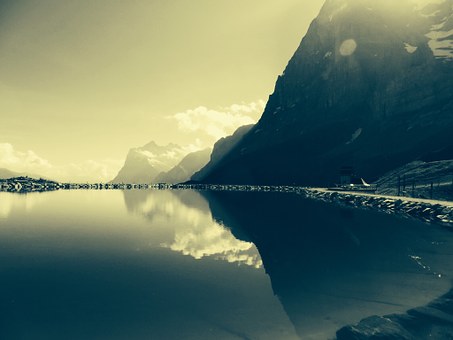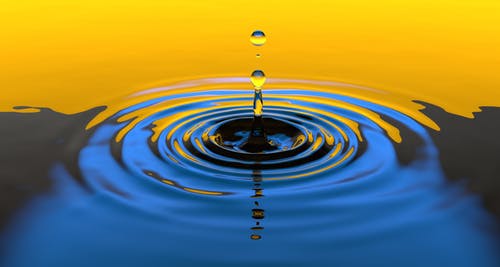Hydrotherapy - The Great Water Cure...
|
Water is without a doubt the most ancient of all remedial agents for disease and the greatest gift to hydrate and cleanse the body. Water owes its value as a therapeutic agent chiefly to three most remarkable properties: 1- Its great power for absorbing and communicating heat. 2- Its solvent properties, water being the universal solvent. 3- The facility with which its physical state may be changed from a liquid to a solid or a gaseous form. |
These properties give to it the most perfect adaptability to the various modes of application which are required in hydrotherapy.
In hydrotherapy, water is most commonly used in its liquid state, but it is also employed in the form of ice, and in the form of steam. A variety of types of baths are available from hot to cold to a mineral pool to the great ocean. Holy Spirit Wellness does not suggest a type of colonics (where pressured water is used) which often is misconstrued with hydrotherapy in itself, as this is an invasive procedure which is not natural nor is it safe. The closest thing to a forced expulsion effect would simply be the use of an enema (colonic irrigation) formulated from herbs and this would be a very rare case. For internal cleansing, herbs & spices, water therapy, various foods and fasting remain the superior choice and are extremely enjoyable.
Spa settings are where we can find an atmosphere that caters to wellness and peace and tranquility. It is worth the time to find a nice spa or hot spring near you as a place you can go to and enjoy mud and clay treatments, seaweed masks, soaking in natural mineral springs, etc. If you do not have such amenities close by, Holy Spirit Wellness suggests creating your very own home spa, which can be a lot of fun and so enjoyable as well!
In hydrotherapy, water is most commonly used in its liquid state, but it is also employed in the form of ice, and in the form of steam. A variety of types of baths are available from hot to cold to a mineral pool to the great ocean. Holy Spirit Wellness does not suggest a type of colonics (where pressured water is used) which often is misconstrued with hydrotherapy in itself, as this is an invasive procedure which is not natural nor is it safe. The closest thing to a forced expulsion effect would simply be the use of an enema (colonic irrigation) formulated from herbs and this would be a very rare case. For internal cleansing, herbs & spices, water therapy, various foods and fasting remain the superior choice and are extremely enjoyable.
Spa settings are where we can find an atmosphere that caters to wellness and peace and tranquility. It is worth the time to find a nice spa or hot spring near you as a place you can go to and enjoy mud and clay treatments, seaweed masks, soaking in natural mineral springs, etc. If you do not have such amenities close by, Holy Spirit Wellness suggests creating your very own home spa, which can be a lot of fun and so enjoyable as well!
hYDROTHERAPY tREATMENTS, bENEFITS,
tYPES & cONTRADICTIONS
|
Hydrotherapy treatment involves the use of unique properties in water to achieve therapeutic benefits.
“Hydrotherapy treatment” is treating a disease or symptoms with the use of water. In its basic form, hydrotherapy is a type of warm or cold water massage that helps relieve pain. Hydrotherapy uses the temperature and pressure of water to offer relief from symptoms. WHEN WAS HYDROTHERAPY INVENTED? Hydrotherapy dates back as far back as 4500 BC, to Ancient Greece, Chinese, Roman, and Egyptian civilizations. In these ancient cultures, bathhouses were a vital component of life. These bathhouses spread through Europe in the 17th and 18th centuries, and finally made it to the United States in the mid 1700s. Hippocrates documented his early use of hydrotherapy and referred to the treatment as hydropathy. |
|
Hydrotherapy has truly evolved in the United States, and now encompasses many different forms:
Whirlpool or Aquatic Therapy: This is a type of hydrotherapy that a physical therapist or aquatic therapist will provide. A therapist may use different positions or directions depending on the results he/she wants to achieve. Contrast Bath: As the name suggests, this is using cold and hot water baths alternatively. Contrast baths are proven to reduce pain, swelling, and inflammation. Hydro-massage: Hydro-massage often uses high pressure jets. This helps in pain reduction as well as relaxation. Spas: Spas can involve baths, pools, showers, or whirlpools. They are usually unsupervised and can be used for recreational purpose. Kneipp System: The Kneipp System – named after its designer, Father Sebastian Kneipp, uses different water temperatures with herbal and mineral baths. This has various health benefits in addition to a purifying diet or spiritual practice. PRINCIPLES OF HYDROTHERAPY Hydrotherapy is unique as it can act as a treatment choice for either assistive or resistive force. There are unique principles of water that can make this possible: Buoyancy: As per Archimedes Principle of Buoyancy, a body immersed in a liquid experiences an upward force equal to the weight of the displaced liquid. This is why the body feels less weight in water than on land (this is also the principle behind hydrostatic weighing). The buoyancy of the water can assist or resist with the exercises of the extremities. In addition, changing the speed will either grade or change the exercise difficulty. In addition, the buoyancy of water is affected by postural alignment and the surface area immersed in the water. Hydrostatic Pressure: A perpendicular pressure against the surface of the body exerted by water is called hydrostatic pressure. This pressure increases as the depth and density of the liquid increases. This is why a motion is performed more easily near the surface of the water than at greater depths. Cohesion: Water molecules have a tendency to attract to each other. As a result, molecules are cohesive. This causes an increase in resistance to range of motion compared to that of the air. Viscosity: Viscosity is an internal friction that directly depends on the speed of the liquid. In other words, the higher the speed, the higher the viscosity, and thus, the higher the resistance to the movement. Furthermore, the shape of the object (the body) also affects viscosity. A larger or more spread out object faces greater resistance to motion in the water. |
H2O = 2 Hydrogen Atoms and
|
HYDROTHERAPY TREATMENT BENEFITS
Hydrotherapy is useful in the treatment of: -Management of acute or chronic pain -Rehabilitation for pre- and post-joint replacement surgery -Relieve arthritis pain -Improve muscle flexibility -Improve range of motion -Improve strength via resistance training -Weight loss -Reduce muscle spasm -Fight fatigue -Aid in relaxation and lower stress levels -Increase blood flow in the body -Reduce aches and pains of sore muscles -Relieve joint stiffness -Ease common cold symptoms (clearing airways) -Assist with issues related to hypertension -Relief from headaches Additionally, hydrotherapy is a good alternative to vigorous exercise during pregnancy, and can help with labor pains during childbirth (water birth). HYDROTHERAPY CONTRAINDICATIONS Hydrotherapy should be avoided in the following conditions: -Open wounds -Active infection -Altered sensation -Hydrophobia -Heat or cold intolerance -Poor balance www.homeceuconnection.com/blog/hydrotherapy-treatment-benefits-types-contraindications/ |
THe Water Cure.... In Depth
|
HYDROTHERAPY | BALNEOTHERAPY | THALASSOTHERAPY
In Greek Medicine, there evolved a healing tradition called the Water Cure. The Water Cure is the common term for a collection of therapies which, in one way or another, make skillful and ingenious use of the healing virtues of Water: Hydrotherapy: techniques of therapeutic bathing and use of water Balneotherapy: therapeutic bathing in medicinal and thermal springs Thalassotherapy: the therapeutic use of ocean bathing and marine products Hydrotherapy, balneotherapy and the Water Cure are not dead relics of antiquity; rather, they have lived on, and are still practiced today. Hydrotherapy enjoyed a great resurgence in 18th and 19th century Austria and Germany, and was a key part of Father Sebastian Kneipp's system of natural therapeutics, which went on to become the basis for Naturopathy. In many European countries that have hot springs or spa resorts, balneotherapy and spa treatments are a recognized subspecialty of medicine. TYPES OF BATHS AND APPLICATIONS Hydrotherapy is a very versatile treatment modality, capable of producing a wide variety of therapeutic effects not only according to the temperatures of the waters used, but also how they are applied. Although there are almost an endless variety of ways to apply hydrotherapy, the major ones are: Full Bath: Total body immersion. Can produce a wide variety of systemic effects and reactions, depending on the water temperature(s) used, either singly or in succession. Foot Bath: Immersing the feet, up to the ankles, in a shallow tub of water. Cold water is indicated for varicose veins, foot edema, headaches, low blood pressure, sweaty feet, sprained ankle. Warm for sleeplessness, susceptibility to colds and flu. Alternating hot / cold for improving circulation in the feet and legs. Avoid cold foot baths if the kidneys are weak, or the bladder sensitive or irritable. Sitz Bath: Immersing the hips, buttocks and pelvis by sitting down in a medium sized tub, with water up to the navel. Excellent for treating all types of pelvic disorders. Cold for inflamed anus, hemorrhoids. Warm for urinary obstruction, irritable bladder, prostatitis. Alternating hot / cold to greatly strengthen circulation, immunity, healing and regeneration in the pelvic organs. Sponge Bath: Great for cooling down the body in fevers, or in hot weather if cool water is used. Blanket Wrap: The patient is wrapped in a cotton or linen sheet, thoroughly wet with cold water. Around this is wrapped a dry sheet, and around this a thick wool blanket. If desired, the patient can drink a cup of hot diaphoretic (sweat inducing) herbal tea like Elder flower tea before getting wrapped. This is used to powerfully sweat out colds and the toxins that cause them. Steam Bath: This is a sauna with the addition of water or herbal teas to create steam. Steam has many of the dispersing, opening, relaxing effects of hot water, but is more penetrating. Steam also penetrates into the lungs and respiratory tract to release phlegm, and opens the pores of the skin to release copious quantities of sweat. Steam baths and saunas are contraindicated in acute infections, inflammations and fevers. Compresses: This is the application of hot and / or cold water bottles. This is an excellent way to apply heat and / or cold locally to an area. Apply alternating hot and cold compresses over the liver area, for example, to bring detoxification, healing and regeneration to that organ. Fomentations: Soaking the affected area with a wet, hot or cold hand towel. Usually, hot fomentations are used, which are re-dipped into the hot water or herb tea to refresh their heat once they start to cool off, for a total treatment period of 20 to 30 minutes, at least twice a day. The heat and moisture draw out the blood and circulation, increase phagocytosis and immune activity, and open the pores so that the medicinal constituents of the herbs may penetrate more deeply. Great for arthritis, rheumatism, and various skin disorders like eczema, if the right herb teas are used. PRECAUTIONS AND CONTRAINDICATIONS FOR HYDROTHERAPY Regular bathing in tepid to moderately warm water is safe for everyone; it's an essential part of daily hygiene. As long as the necessary precautions against catching chills after the bath are taken by those who are so predisposed, such bathing is absolutely safe. Warm or hot water bathing immediately or shortly after meals, before one's food has been adequately digested, is also inadvisable, especially for long periods. Warm or hot water immersion draws blood away from the digestive organs at the body's core and towards the periphery, thus impairing proper digestion. Warm or hot water bathing also opens the pores of the skin through sweating, increasing one's susceptibility to drafts and chills. Although bathing in water of a moderate temperature is relatively safe and recommended for everyone, bathing in very hot or very cold water isn't advised for those with compromising health conditions. Most obviously, these include heart disease, high or low blood pressure, pregnancy, and the very old or very young. Saunas and long, hot immersions are contraindicated for the very old and very young, pregnant women, and those with diabetes, heart disease, multiple sclerosis and abnormally high or low blood pressure. The common sense laws of temperament also dictate that saunas or long, hot immersions should not be undertaken by those suffering from excessive heat - acute fevers, infections, putrefaction or inflammation. Similarly, cold immersions are contraindicated for the very old or very young, as well as those who are very frail and delicate of constitution, or those whose immune systems have been compromised. Cold baths or showers are also contraindicated for those whose systems are cold and weak, or those who are prone to catching chills. Cold bathing is also not for those with high blood pressure or heart disease, or those suffering from Raynaud's Syndrome. Cold foot baths are contraindicated for those with weak kidneys or urinary debility, an irritable bladder or rectum, sciatica and low back pain, pelvic inflammatory disease, or arthritis and rheumatism in the feet, toes or ankles. The most risky and problematic applications of hydrotherapy for those with compromising health conditions are long baths and full immersions in very hot or very cold water. Local applications and partial immersions are generally far less risky and problematic, and much better tolerated, except where explicitly contraindicated, as in the preceding paragraphs. http://www.greekmedicine.net/therapies/The_Water_Cure.html |
'Toji' Onsen Therapy
Hot springs, or "onsen" in Japanese, are often regarded as a cure-all that's "good for what ails you" in Japan. "Toji," the actual practice of hot spring therapy, goes back thousands of years and continues to have an important role in the traditional Japanese healing regimen. What is toji? Enjoying hot spring therapy at a Japanese onsen "Toji," the practice of bathing in mineral-rich hot springs (or "onsen" in Japanese) as a form of balneotherapy, is a custom that has been passed down in Japan since ancient times. Literally meaning "hot water cure" in Japanese, toji as a medical treatment involves staying for an extended length of time at a hot spring ryokan (traditional Japanese inn) to absorb the healing benefits of the mineral-rich hot springs into one's body. This is said to aid in recuperation and the treatment and prevention of a variety of ailments. In modern times, toji is typically practiced by staying at a ryokan equipped for onsen therapy, specializing in two- to three-night stays. These ryokan aim to help visitors refresh themselves and shake off the stress and fatigue of everyday life, and have recently been gaining in popularity both for their historical relevance and relaxation value. https://travel.rakuten.com/campaign/ranking/touji/ |
There is More to Water than Meets the Eye!
Water is one of our most precious resources known and without it, our bodies stop functioning properly. In our world today we know the devastating effects of unclean waters and the harm they can do to the environment, animals, and civilizations. Our ancestors knew the amazing cleansing power of H2O!









